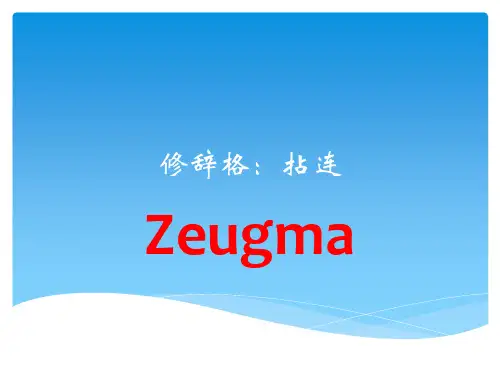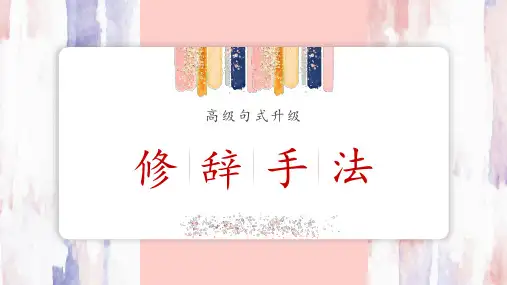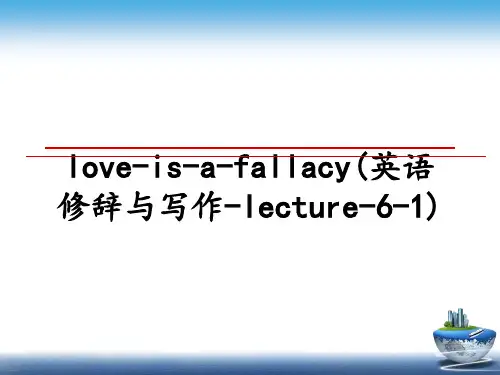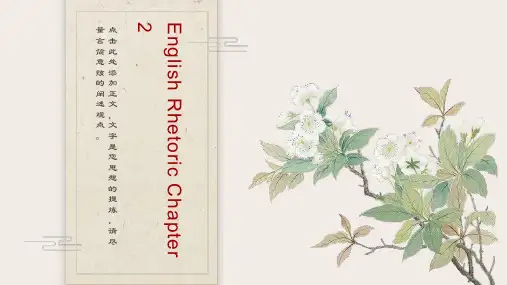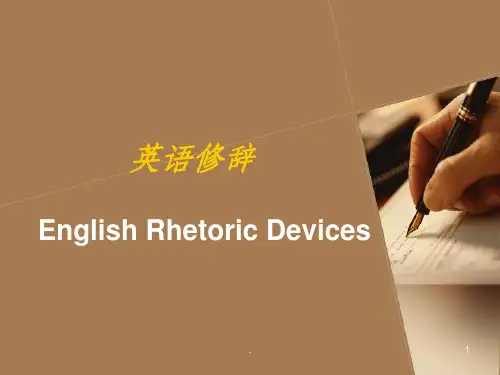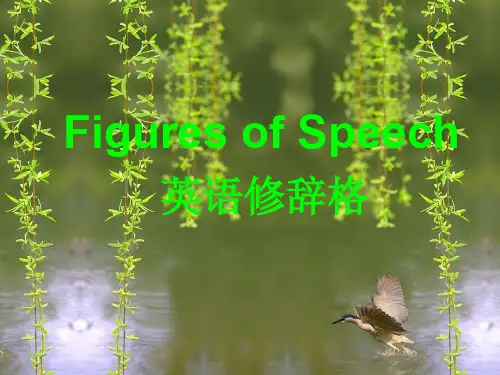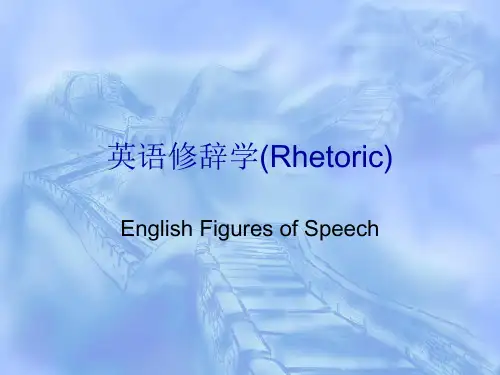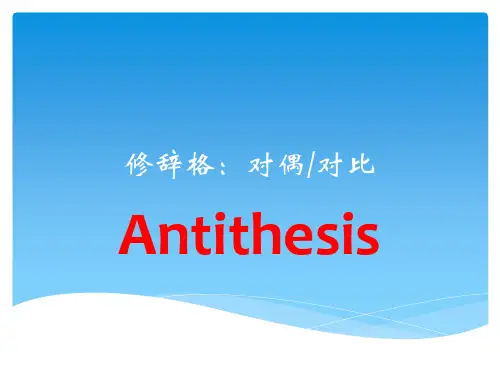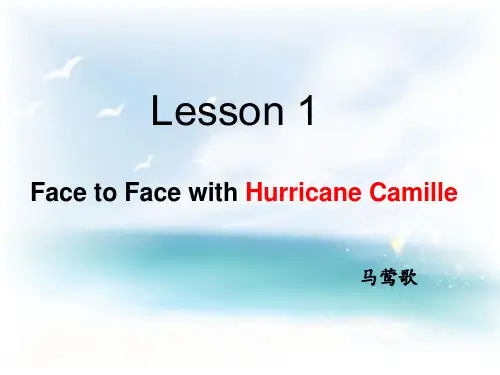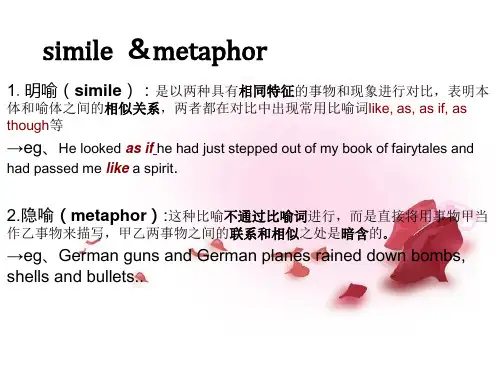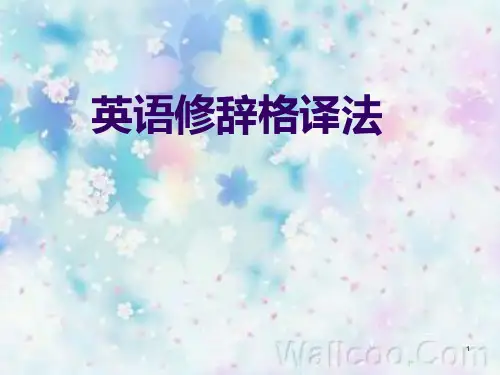第16页/共24页
• (5)He was on his feet, flinging his arms, his rhetoric and his control to the winds, alternately abusing Ernest for his youth and demagoguer y, and savagely attacking the working class, elaborating its inefficiency and worthlessness.
第4页/共24页
一笔双叙和轭式搭配的区别
•在 用 一 个 词 ( 如 动 词 、 介 词 、 形 容 词 ) 去 修 饰 支 配 另 外 两 个 或 多 个 临 近 词 时 的 情 况 下 : •syllepsis :该词(v.prep.adj. )与邻近词能够成正常的搭配关系。 •如:He lost his hat and his temper.
第3页/共24页
Zeugma特征
• 从以上注释可得出Zeugma的两点特征: • 其一是“共轭性”,即通常用一个形容词或动词(有
时是介词)修饰或支配两个或两个以上的名词; • 其二是“两种(或两种以上)搭配意义表面上的”
不协调性”,即一种常见搭配和一种非常搭配的结 合,给读者的第一印象造成不协调的感受,这种不协 调感受在读者回神时瞬间即逝,进而因强烈地感受 到话语者的深刻用意而释然,正是这种“不协调 性”,Zeugma的应用方能在交际目的中发人深省,
•例(14)中get out of humor和put on the water 都是“牵强符合”的搭配,分别与正常的搭配连用, 使语言显得幽默风趣。
第22页/共24页
修辞手法拈连(niān lián),是指甲乙两个事物连在一起叙述 时,把本来只适用于甲事物的词语拈来用到乙事物上,这种修辞 手法就叫拈连,又叫“顺拈”。运用拈连,可以使上下文联系紧 密自然,表达生动深刻。 例子(1):蜜蜂是在酿蜜,又是在酿造生活。
